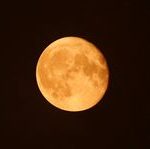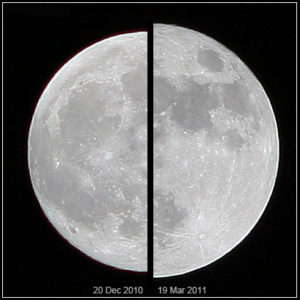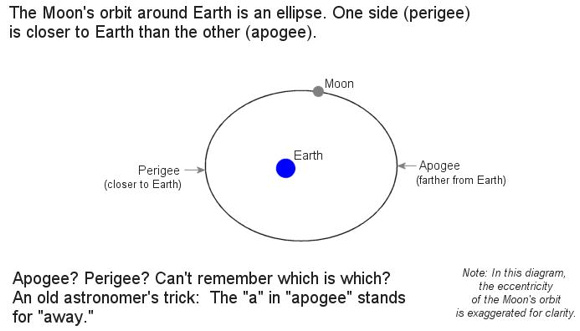
Supermoon image, courtesy of mirror.co.uk
On November 14, do everything you can to be outside when it’s dark. Why? Because you don’t want to miss the supermoon of all supermoons.
What’s a supermoon, anyway? Well, it’s certainly not a space rock with superpowers. (Though with all the Marvel movies coming out, you’d think so.) Nope, the term is — as you probably know — a reference to how close our solar system buddy comes to us during perigee, the closest point of its elliptical orbit around our happy planet. At perigee, the moon can be as much as 14 percent closer to Earth than at apogee, its farthest point away.

The supermoon of March 19, 2011 (right), compared to an average moon of December 20, 2010 (left). Image via Marco Langbroek, the Netherlands, via Wikimedia Commons.
In practical terms, this means Monday’s supermoon will appear 14 percent larger in diameter than at its farthest point. And it will shine about 30 percent more light onto Earth. Timely in so many ways, and so much fun too!
The best viewing in the US will be on Monday morning just before dawn, an hour or so before the crest of the full moon. That translates to 6:22 a.m. Eastern, 5:22 a.m. Central, and 4:22 a.m. Pacific. If you’re a night person, go outside Sunday night because you’ll still get a great view, even if the moon won’t be quite at perigee until 6:22 a.m. EST Monday.
If you miss it after all, you have one last chance to see a supermoon in 2016. Though the moon won’t be at its closest ever pass, you’ll still have an impressive view on December 14.
